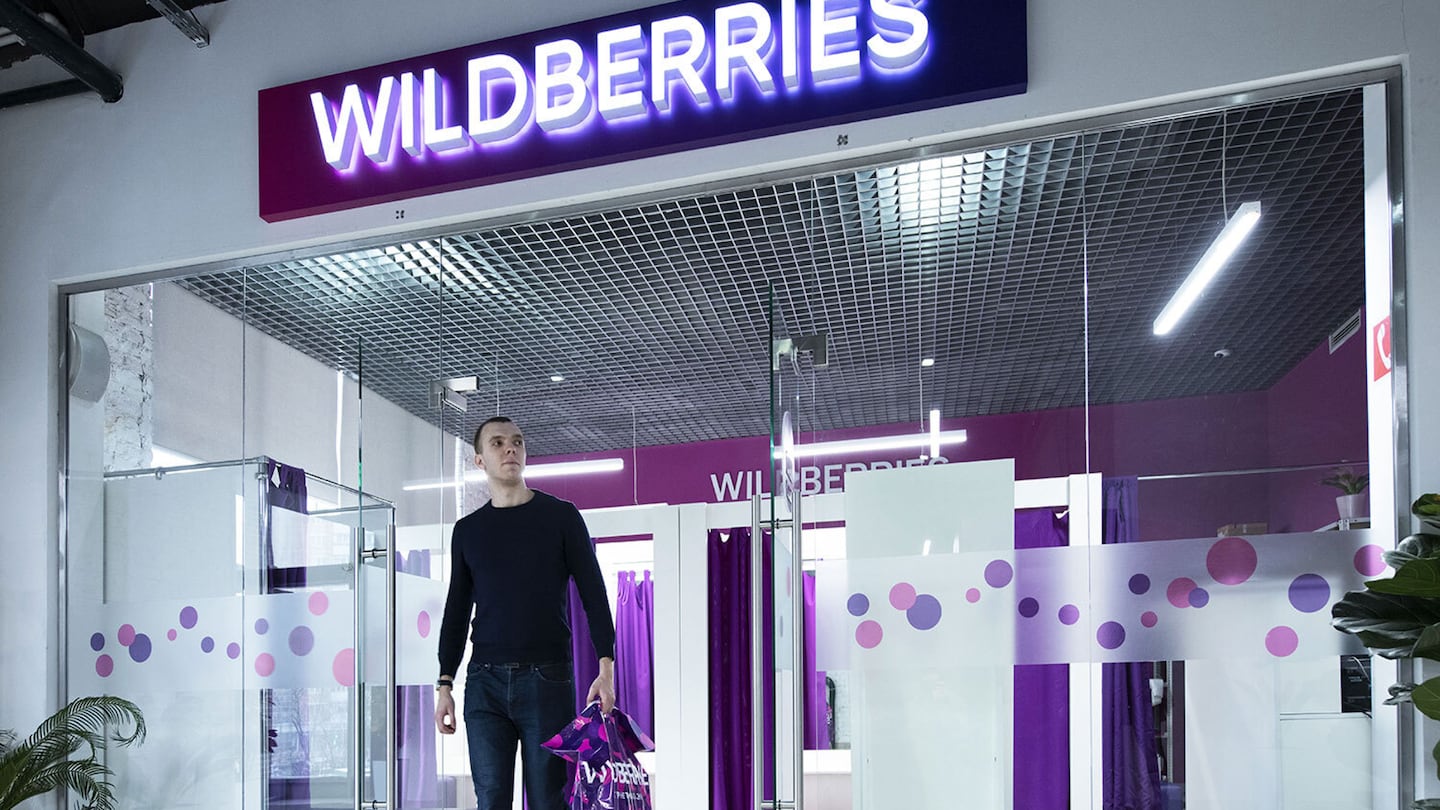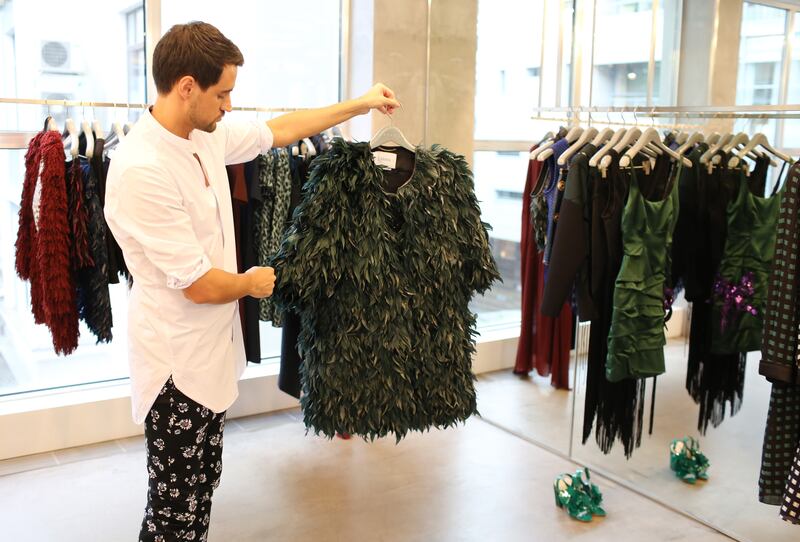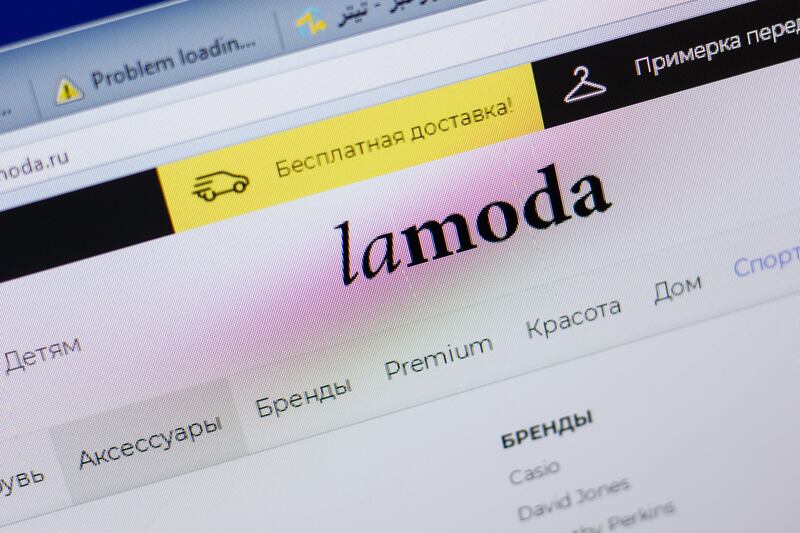
The Business of Fashion
Agenda-setting intelligence, analysis and advice for the global fashion community.

Agenda-setting intelligence, analysis and advice for the global fashion community.

The theft of packages sent through the Russian Post system was so commonplace ten years ago that it became a meme. Long-suffering customers helped highlight the problem by circulating a video made by a young woman who went to her local post office to enquire about a hoodie she’d ordered only to find it being worn by one of the staff there, says Moscow-born consultant Sasha Krymova.
Delivery theft has fallen significantly in the years since, but Krymova says the lack of dependable logistics infrastructure and quality payment methods continues to make e-commerce difficult in Russia.
“As our famous novelist Gogol once said, there are two misfortunes in Russia: fools and bad roads,” quips Krymova, who co-founded fashion consultancy Dear Progress three years ago.
Deliveries have historically been slow and unreliable in this colossal market stretching more than 9,000 kilometres across eleven time zones, a fact that has contributed to lower consumer uptake of e-commerce than in other markets. Today, online accounts for just 5 percent of total retail sales in Russia compared to around 14 percent worldwide, according to Russian internet consultancy Data Insight.
ADVERTISEMENT
That leaves plenty of roubles on the table for whomever can grow e-commerce sales in an apparel market worth $44.5 billion in 2019, according to Euromonitor International. That amounts to a market opportunity greater than both France’s and Italy’s.
In recent years, a number of platforms have stepped up to tap this opportunity and fix some of the remaining obstacles, incurring significant costs to provide services including fast, free delivery and payment on arrival, but at this stage it’s hard to declare an outright winner.

“In Russia the audience is quite segmented, and people are loyal [only] to the exact platform they’ve tried and found satisfactory,” says Alexander Shumsky, president of the Russian Fashion Council and Mercedes-Benz Fashion Week Russia.
Indeed, Russia’s top five e-commerce platforms account for just 27 percent of the $30 billion e-commerce market compared to 63 percent in the US and 83 percent in China.
That fragmentation may be helping to drive competition among some players, but it poses a challenge for fashion brands and businesses trying to sell online in Russia. The shortage of existing payment services and delivery networks to piggyback off makes it difficult for brands to establish their own independent e-commerce stores, and with so many different e-commerce platforms still trying to secure a piece of the market it’s not always obvious who would make the best partner.
Wild Growth
Wildberries, which began as a fashion platform, is an obvious candidate. The e-commerce giant was founded by Tatyana Bakalchuk, a former English teacher, who created the company in her Moscow apartment while on maternity leave in 2004. Now, she’s Russia’s richest woman, and Wildberries is Russia’s single largest e-commerce platform by sales revenue.
No other e-commerce giant has anything close to this Wildberries network.
In 2019, before the pandemic spurred online platforms to new heights, Wildberries’ turnover had already increased 88 percent to around $3 billion, helping to almost quadruple the firm’s net profit. The company now fulfils some 750,000 orders a day using their own impressive logistics network, which includes 7,000 pick up points across Russia.
ADVERTISEMENT
“No other e-commerce giant has anything close to this Wildberries network,” Shumsky says.
Among the fashion brands selling apparel on the site are: Calvin Klein, Diesel, Karl Lagerfeld, Levi’s, and Michael Kors. Coach bags are also available as are eyewear and fragrances by brands such as Prada, Versace, Burberry and Hugo Boss.
But despite its popularity, Wildberries isn’t a platform every fashion brand wants to be associated with. Prices skew cheap, and their pickup points, where people can try on clothes, are not always glamorous.
“They’re mostly in basements, paying so little rent that it makes the network very effective and profitable,” Shumsky says.
The company has also diversified into segments like groceries and consumer electronics that don’t sit well with some fashion brand executives. In 2020 the number of sellers on the platform grew from 19,000 to 91,000, but the proportion of the company’s turnover from fashion declined to 50 percent.
Wildberries’ Business Development Director Vyacheslav Ivashchenko pushes back against the categorisation of the company as no-frills, saying their pick-up points are “comfortable,” and customers can also have items delivered to their home or office.
“We have equally successful sales of both mass and premium brands, and the latter showed fairly significant sales dynamics in 2020 — the growth of the premium segment was 139 percent year-on-year,” he says.
Still, Wildberries’ strength is volume, not exclusivity. With last month’s acquisition of the Standard-Credit Bank to help develop more effective payments solutions, Wildberries is in a strong position to fend off competitors such as search giant Yandex, who set up a $1 billion e-commerce venture with state owned Sberbank, Mail.ru, which has a partnership with China’s Alibaba, and Ozon — all of whom aspire to be Russia’s go-to digital hypermarket.
ADVERTISEMENT
Arguably, Wildberries is already in pole position to win that race — their total sales in 2019 exceeded all three of these rivals combined.
“Today we work not only in Russia, but also in nine other countries,” Ivashchenko says, referring to the companies’ expansion into Central and Eastern European markets like Ukraine, Belarus, Poland, Germany and Slovakia and into CIS markets Kazakhstan, Armenia, Kyrgyzstan, and others in the wider region such as Israel. In February, the company launched in France, Spain, and Italy.
The Race for the Middle
“We don’t want to be in this war with other general merchandise platforms,” says Julia Nikitina, digital CEO of Lamoda.ru, an online fashion platform that sells more than 4,000 brands to around 18 million monthly users.
She says that, for Russian consumers, fashion “is a pleasure, an indulgence. It’s not comparable to [everyday] food or detergent.”
Launched in 2011, Lamoda’s partners include fast fashion brands in the Inditex Group (Zara, Bershka, etc), Mango, sportswear brands such as Tommy Hilfiger, Nike and Adidas, and local brands such as those under St Peterburg’s Melon Fashion Group.
We don’t want to be in this war with other general merchandise platforms.
With an average basket price of only €20 to €25, Lamoda’s offerings may not sound like indulgences, but their brands are perceived as relatively premium in Russia, especially outside Moscow and St Petersburg.
Lamoda has endeavoured to provide a more premium service than the digital hypermarkets. Executives describe their above-ground pick up points as showrooms, for instance, and they offer same day delivery, allowing shoppers to book 15-minute delivery windows so they don’t have to wait around all day to receive an item.

Deliveries in Russia have come a long way since the hoodie meme. Even Russian Post is stepping up their game. A new partnership with AliExpress Russia will see more than 10,000 new checkpoints and pick-up points built in Russia, extending next day delivery to 47 percent of Russians.
“Shopping brands is emotional,” Nikitina says, explaining the importance of fast delivery to closing a sale. “You want it now.”
Lamoda is pouring money into this middle-to-upper segment of the Russian e-commerce fashion market — the site’s owners Global Fashion Group (GFG) lost €112.4 million in 2020 — but they’re continuing to expand, with a second fulfilment warehouse currently under construction near Moscow. GFG just announced a target of growing its net merchandise value from just under €2 billion last year to €10 billion in the next seven to nine years.
New Luxuries
Lamoda’s brands may be aspirational for many in Russia, but wealthy consumers are more likely to be purchase luxury goods on global platforms like Farfetch or Russia’s own Aizel.ru — which stocks over 700 labels including Agent Provocateur and Christian Louboutin. Trudel launched one of Moscow’s first concept stores in 2002 at just 25 years old.
“When talking about luxury e-commerce, Aizel.ru is a perfect fit,” Shumsky says. “It has a smaller geography for its state-of-art delivery, but it excels in client service — packaging, delivery, personalisation.”
It’s a mixed picture for the global luxury e-commerce players. According to a Net-a-Porter customer service agent reached by phone, the e-commerce giant has limited delivery to Russia by category. Mytheresa declined to comment but the website states that delivery is available to more than 35 Russian cities by DHL. And a spokesperson from Matchesfashion confirmed a year on year increase in order demand from Russia in 2020, “in line with the growth we saw across Europe.”
Shumsky also mentions Butik.ru, a platform that combined e-commerce with traditional department stores. The site has since shut down, but the hybrid model is one that the founders are reportedly still pursuing.
According to Krymova, the e-commerce platforms of traditional department stores such as Tsum also did well over the past year after the pandemic forced them to make leaps forward online. She says that, along with Louis Vuitton, Prada is one of the few luxury fashion brands to push ahead with their own Russian online stores.
When talking about luxury e-commerce, Aizel.ru is a perfect fit.
“They launched their own e-commerce site in 2020 and it’s been a huge success for them,” she says. The site benefited both from the decline in luxury shopping in brick-and-mortar stores, and the fact that wealthy Russians weren’t able to purchase luxury items on trips abroad.
Channel Surfing
Like the e-commerce market itself, Russian media audiences are also fragmented, which creates additional challenges for brands and platforms.
In addition to traditional media like TV, radio and print, Lamoda’s Nikitina says they’ve developed 90 digital sources of traffic. “Usually you have just two: Facebook and Google.”
Search marketing on Google and Yandex are key, she says but they’ve also seen surprising results from ads on Apple’s App Store, a service launched in Russia in October last year, and a lifestyle show on social network VK (VKontakte) that around eight million people watched over five or six episodes last year.
Shumsky estimates sales through social channels in Russia have reached 591 billion roubles ($7.9 billion), and of these 100 billion roubles ($1.3 billion) are in the fashion category.
“Brands tend to develop their Instagram and now TikTok accounts as well as their websites,” he says. “Social media is a strong channel of [Russian] sales for a lot of designers, especially Instagram and VK, while Telegram is also having its moment.”
While many global brands are still contemplating their best options for the Russian e-commerce market, independent local retailers are fast gaining traction online.
Launched in 2014 by twin sisters Irina and Marina Golomazdiny and Ivan Khokhlov, the brand 12 Storeez presents 12 collections a year to 1.4 million followers on Instagram. Online sales channels of concept stores such as Olga Karput’s KM20, Hatulia Avsadjanashvili’s Babochka and Tatyana Strekalovskaya’s SVMoscow are also garnering a following.
These may not seem like major rivals to global fashion brands and retailers, but neither did Wildberries or Aizel.ru ten or fifteen years ago. For brands and businesses wanting to capitalise on Russia’s e-commerce boom, deciding how to tap the online market — partnering with a selected e-commerce platform or platforms, or going it alone — may be more fraught than wondering when. The space is maturing fast, with or without them.
Related Articles:
Opening Russia’s Retail Frontiers
Russia’s Luxury Market on the Mend
How Russia’s Largest Fashion Group Is Driving Retail Growth in St. Petersburg
This week’s round-up of global markets fashion business news also features the China Duty Free Group, Uniqlo’s Japanese owner and a pan-African e-commerce platform in Côte d’Ivoire.
Affluent members of the Indian diaspora are underserved by fashion retailers, but dedicated e-commerce sites are not a silver bullet for Indian designers aiming to reach them.
This week’s round-up of global markets fashion business news also features Brazil’s JHSF, the Abu Dhabi Investment Authority and the impact of Taiwan’s earthquake on textile supply chains.
This week’s round-up of global markets fashion business news also features Dubai’s Majid Al Futtaim, a Polish fashion giant‘s Russia controversy and the bombing of a Malaysian retailer over blasphemous socks.